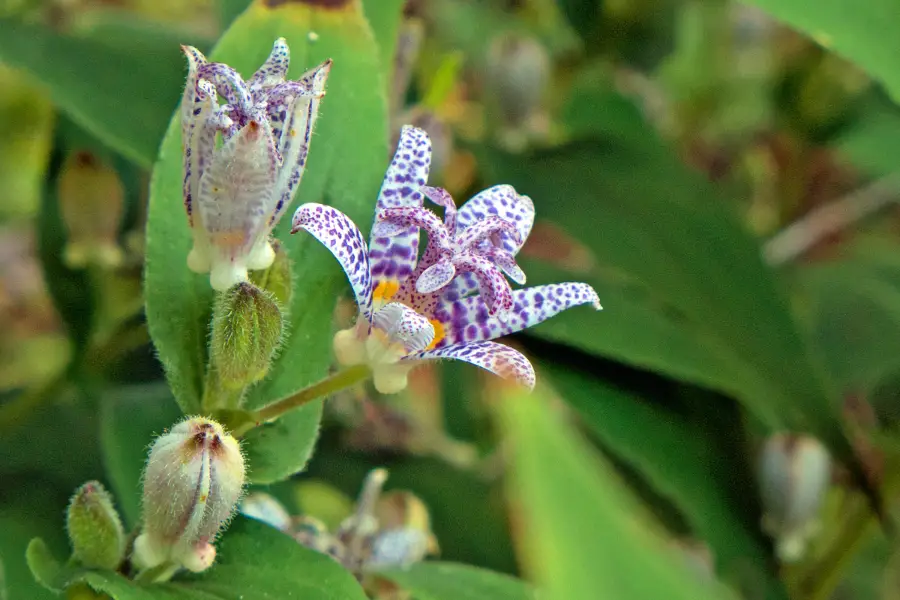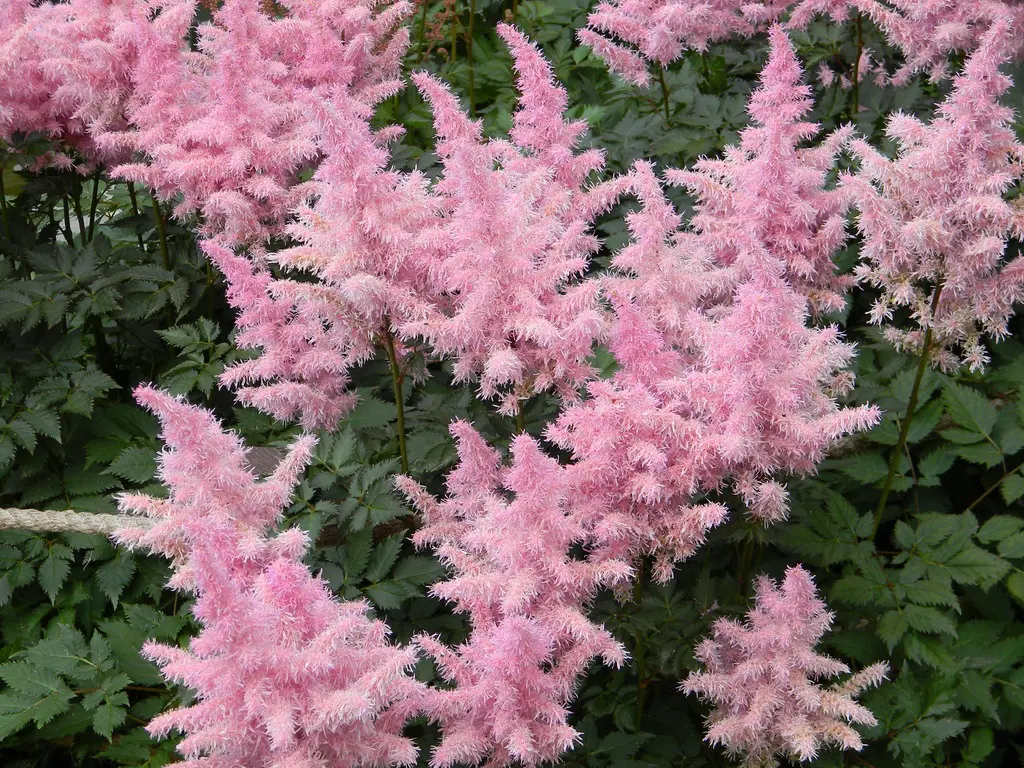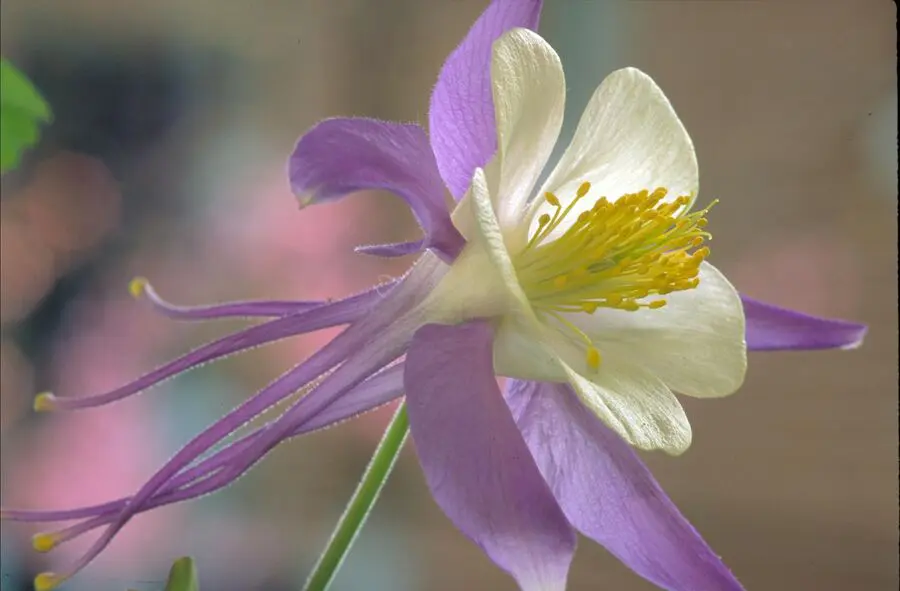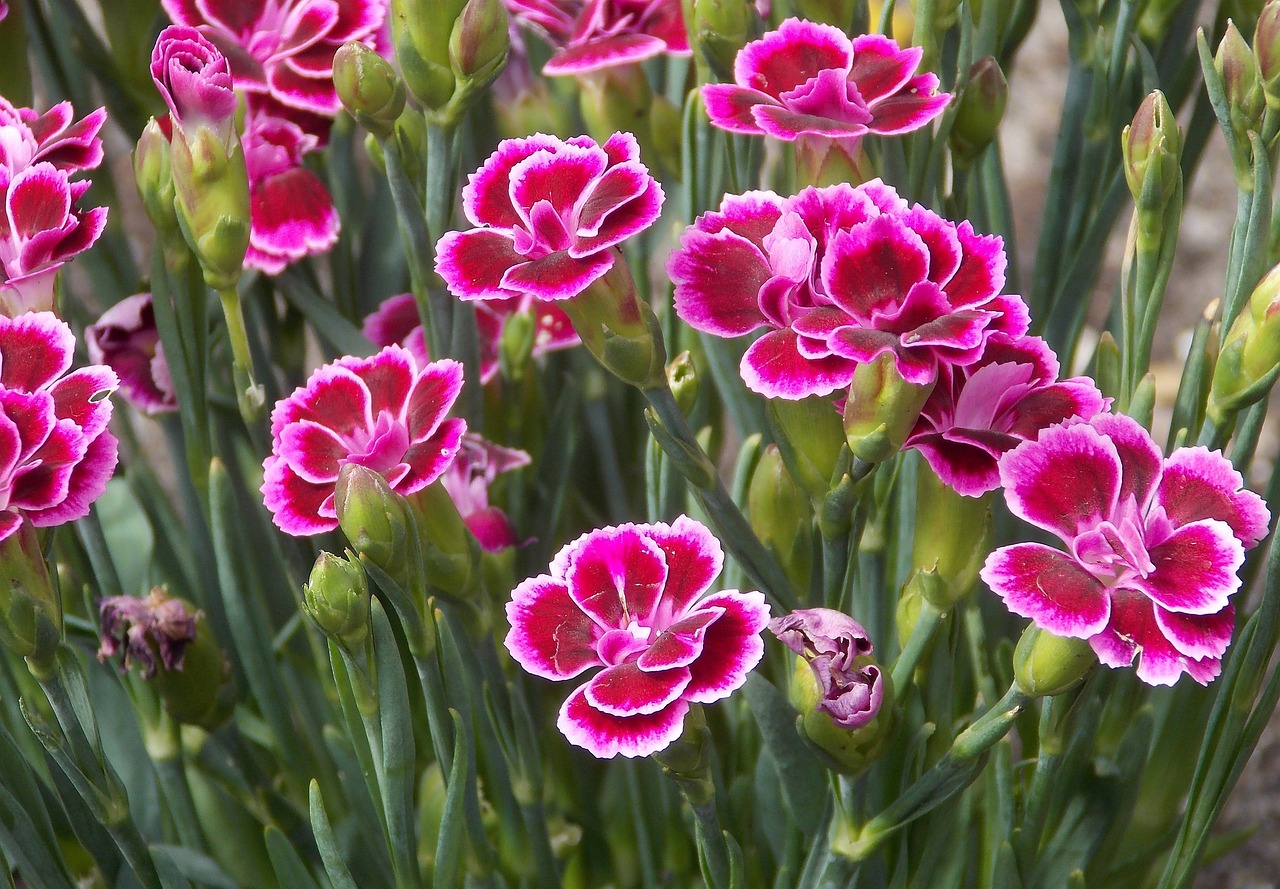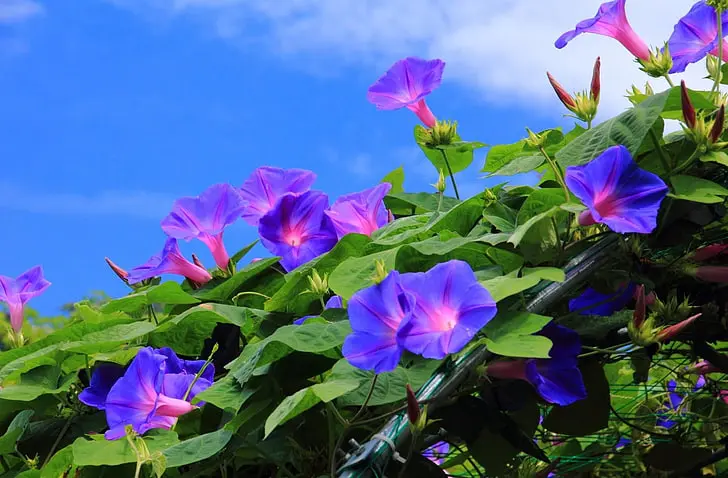This post contains affiliate links. If you buy something from one of our links we may earn a commission. Thanks
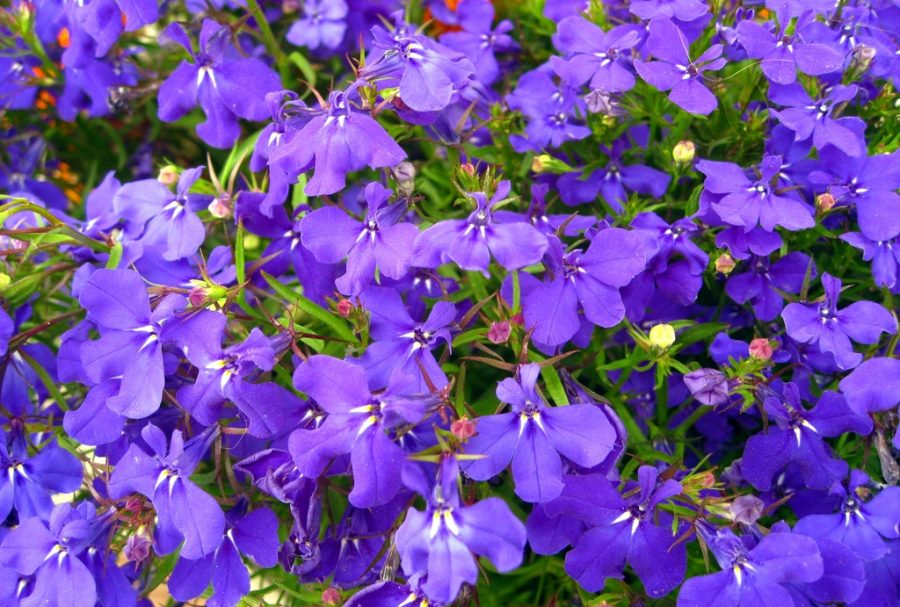
Imagine a cascade of vibrant blooms spilling over the edge of your favorite pot, transforming your patio or balcony into a colorful oasis. That’s the beauty of Lobelia care in pots!
Lobelia care in pots involves selecting a well-draining potting mix and a container with drainage holes. Place the pot in a location that receives partial to full sun. Keep the soil consistently moist but not waterlogged. Fertilize with a balanced liquid fertilizer every 4-6 weeks during the growing season for best flowering results.
This guide will take you on a journey through the ins and outs of nurturing these charming flowers, ensuring a stunning display that will be the envy of your neighborhood.
So, let’s dive in and explore the world of Lobelia together!
Introduction: Lobelia Care In Pots
Welcome to the delightful world of Lobelia care in pots! If you’ve been looking to add a splash of color to your outdoor space, you’ve come to the right place.
In this comprehensive guide, we’ll explore everything from the different types of Lobelia and their unique characteristics to the best practices for planting, caring for, and even propagating these stunning blooms.
We’ll also delve into common issues you might encounter and how to troubleshoot them.
So, whether you’re a seasoned gardener or just starting out, this guide has got you covered. Let’s embark on this gardening adventure together!
Brief Overview of Lobelia and Its Popularity as a Potted Plant
Lobelia, with its vibrant hues and delicate blossoms, has become a favorite among gardening enthusiasts, and for good reason.
These charming flowers, whether draped over the edge of a pot or bursting with color in a hanging basket, have a way of bringing a space to life.
Their versatility and visual appeal have made them a popular choice for container gardening.
Whether you’re sprucing up your patio, balcony, or indoor space, Lobelia in pots can create a stunning visual impact that’s hard to ignore.
Understanding Lobelia
Now, let’s get to know Lobelia a little better. Belonging to the Campanulaceae family, Lobelia is a genus of flowering plants that includes both annual varieties and perennials.
The most commonly known types are Lobelia erinus, the trailing Lobelia, and Lobelia cardinalis, the Cardinal Flower.
These plants are loved for their vibrant blue, violet, white, or red flowers that bloom profusely, creating a sea of color.
Lobelia is not just about beauty, though. It’s also about resilience. These plants are known for their ability to thrive in various conditions, making them a great choice for both novice and experienced gardeners.
So, whether you’re looking to create a stunning hanging basket or a vibrant pot display, Lobelia is a fantastic choice.
Different types of Lobelia
Let’s dive a little deeper into the world of Lobelia. Did you know that there are over 400 species of Lobelia? That’s right!
This diverse genus of plants offers a variety of options for your garden beds.
From trailing varieties that spill beautifully over the sides of pots to upright types that add a pop of color to your flower beds, there’s a Lobelia for every gardening need.
In the next section, we’ll explore some of the different types of Lobelia, their unique characteristics, and why they might just be the perfect addition to your potted plant collection.
Characteristics of Lobelia
Lobelia is truly a sight to behold. One of the most striking characteristics of Lobelia is its vibrant flowers.
These blossoms, which can range in color from deep blues and purples to bright reds and whites, are small but profuse, often covering the plant in a blanket of color.
The leaves of the Lobelia plant are usually green or reddish-purple, adding to its visual appeal.
Another notable characteristic of Lobelia is its growth habit. Some varieties, like the Lobelia erinus, are trailing plants that can spread up to 18 inches, making them perfect for hanging baskets or as a ground cover.
Other varieties, like the Lobelia cardinalis, have an upright growth habit and can reach heights of up to 4 feet, making them a great choice for adding height to your garden or pot.
The cardinal flower, a native variety of Lobelia, boasts numerous striking scarlet red flower spikes that rise majestically above its deep burgundy-bronze leaves.
You can also find perennial Lobelias in delightful shades of pink and blue. These varieties display the same impressive, spiky blooms, but they’re set against a backdrop of lush, deep green foliage.
Lobelia Bloom Time
One of the reasons Lobelia is such a favorite among gardeners is its generous bloom time.
Depending on the variety and the growing conditions, Lobelia can start blooming in early spring and continue right through to the first frost in fall.
This means you can enjoy its vibrant display for several months of the year.
It’s worth noting, though, that Lobelia might take a little break during the hottest part of the summer.
But don’t worry, as soon as the weather cools down a bit, it will be back to its blooming best!
Choosing the Right Lobelia for Your Pot
Choosing the right Lobelia for your pot can be quite an adventure. With so many beautiful varieties to choose from, how do you decide which one is right for you?
Well, that’s where we come in! In this section, we’ll discuss the factors you should consider when choosing a Lobelia for your pot.
We’ll also share some of the best varieties for pot cultivation. So, whether you’re looking for a trailing variety for your hanging baskets or compact varieties type for your patio pots, we’ve got you covered. Let’s find the perfect Lobelia for your pot!
Factors to Consider When Choosing Lobelia for Pots
Choosing the right Lobelia for your pots involves considering a few key factors. First, think about the location of your pot.
Will it be in full sun, partial shade, or a spot that gets a mix of both? Some Lobelia varieties thrive in full sun, while others prefer a bit of afternoon shade, especially in hotter climates.
Next, consider the size of your pot. If you’re working with a smaller pot or a hanging basket, a trailing variety of Lobelia might be a perfect fit.
For larger pots, you might consider a mix of trailing and upright varieties for a layered effect.
Lastly, think about the color scheme of your garden or patio. Lobelia comes in a range of colors, from deep blues and purples to vibrant reds and crisp whites.
Choose a color that complements your existing plants or outdoor decor.
Best Varieties of Lobelia for Pot Cultivation
Now, let’s talk about some of the best Lobelia varieties for pot cultivation. If you’re looking for a trailing variety, Lobelia erinus is a fantastic choice.
This variety comes in several colors, including blue, violet, and white, and is perfect for hanging baskets or as a spiller in mixed containers.
For a more upright growth habit, consider Lobelia cardinalis, also known as the Cardinal Flower. This variety can add a pop of color to your pots with its stunning red flowers.
Another great option for pots is Lobelia ‘Queen Victoria’. This variety is known for its striking dark red foliage and bright red flowers, making it a stand out in any pot.
Remember, the best Lobelia for your pot is the one that suits your personal preferences and the specific conditions of your garden or patio. Happy planting!
Planting Lobelia in Pots
Ready to get your hands dirty? Great! Planting Lobelia in pots is a fun and rewarding experience.
Whether you’re a seasoned gardener or just starting out, the process is relatively straightforward.
In this section, we’ll walk you through a step-by-step guide on how to plant Lobelia in pots.
We’ll also discuss the importance of using a slow-release fertilizer to ensure your Lobelia plants get the nutrients they need to thrive. So, grab your gardening gloves, and let’s get planting!
Step-by-Step Guide on How to Plant Lobelia in Pots
Choose the Right Pot: Start by choosing a pot with good drainage. Lobelia prefers moist but well-drained soil, so it’s important to ensure excess water can escape.
Prepare the Pot: Fill your pot with a high-quality, well-draining potting mix. Remember, Lobelia likes rich soil, so choose a mix that’s packed with organic matter.
Plant the Lobelia: Make a hole in the soil that’s about the same depth as the root ball of your Lobelia plant.
Place the plant in the hole and gently cover the roots with soil.
If you’re planting multiple Lobelias in the same pot, make sure to leave some space between each plant to allow for growth.
Water Thoroughly: After planting, give your Lobelia a good drink of water. The soil should be moist but not waterlogged.
Place in the Right Spot: Finally, place your pot in a location that gets the right amount of sunlight. Most Lobelia varieties prefer full sun to partial shade.
Importance of Using a Slow-Release Fertilizer
Now, let’s talk about feeding your Lobelia.
These plants are heavy feeders, which means they need a steady supply of nutrients to produce their vibrant blooms. That’s where a slow-release fertilizer comes in.
A slow-release fertilizer delivers nutrients to your plants over an extended period, ensuring they have the food they need to grow and bloom.
It’s especially useful for potted plants like Lobelia, as nutrients can leach out of pots more quickly than they do in the ground.
To use a slow-release fertilizer, simply mix it into your potting soil when planting.
The fertilizer will slowly release nutrients into the soil, feeding your Lobelia over several months.
This can help promote healthier growth and more abundant blooms, making your Lobelia care in pots even more rewarding!
Lobelia hanging baskets
Have you ever considered the charm of Lobelia hanging baskets? There’s something truly enchanting about a cascade of vibrant Lobelia blooms spilling over the edge of a hanging basket.
It’s a sight that can transform any outdoor space into a colorful retreat.
In this section, we’ll delve into the world of Lobelia hanging baskets, discussing everything from their suitability for hanging baskets to their care requirements.
We’ll also touch on how many Lobelias you might want in a hanging basket for that lush, full look. So, let’s elevate our gardening game with Lobelia hanging baskets!
Is Lobelia Good for Hanging Baskets?
Absolutely! Lobelia are excellent choices for hanging baskets. Their trailing varieties, like Lobelia erinus, are particularly suited for this purpose.
These plants produce a profusion of small, vibrant flowers that spill over the sides of the basket, creating a stunning visual effect.
Whether you’re looking to add a pop of color to your patio or create a welcoming entrance to your home, Lobelia hanging baskets are a fantastic choice.
How Do You Care for Lobelia in Hanging Baskets?
Caring for Lobelia in hanging baskets involves a few key steps. First, ensure your basket is placed in a location that gets the right amount of sunlight.
Most Lobelia varieties prefer full sun to partial shade. However, in hotter climates, they may appreciate some afternoon shade.
Regular watering is also crucial. Hanging baskets tend to dry out faster than ground plantings, so you’ll need to water your Lobelia regularly to keep the soil moist but not waterlogged.
Finally, feed your Lobelia with a slow-release fertilizer to ensure they get the nutrients they need to produce their vibrant blooms.
How Many Lobelias Are in a Hanging Basket?
The number of Lobelias you’ll want in a hanging basket depends on the size of the basket and the look you’re going for.
For a lush, full look, you might plant several Lobelias in a single basket.
A good rule of thumb is to plant one Lobelia for every 4-6 inches of basket diameter. So, for a 12-inch basket, you might plant 2-3 Lobelias.
Lobelia Spacing
When planting Lobelia, whether in a hanging basket or a pot, it’s important to give each plant enough space to grow.
For most varieties, a spacing of about 6 inches between plants is a good starting point.
This gives each plant enough room to grow and spread without crowding its neighbors.
Remember, a little room to grow can lead to a healthier, more vibrant display!
Lobelia companion plants
Have you ever considered pairing your Lobelia with other plants? Just like a good friend, the right companion can bring out the best in Lobelia.
Whether it’s creating a stunning color contrast or ensuring a fuller, healthier pot, companion plants can make a world of difference. In this section, we’ll delve into the art of pairing Lobelia with other plants in pots.
We’ll explore some of the best Lobelia companion plants and how they can enhance your gardening experience.
So, let’s get started and create some beautiful friendships in our pots!
What to Plant with Lobelia in Pots – Lobelia Companion Plants
When it comes to choosing companion plants for Lobelia, consider plants that thrive in similar conditions. Lobelia loves cool weather, so pairing it with other cool-weather plants can create a lush, full container during the spring.
One fantastic pairing is Lobelia and Pansies. The electric blue of some Lobelia varieties beautifully complements the vibrant colors of pansies, creating a visual feast for the eyes.
Violas and white snapdragons also make great companions, their delicate flowers contrasting with Lobelia’s profusion of blooms.
Alyssum and dusty miller are other excellent choices. Alyssum’s sweet-smelling, tiny white flowers and dusty miller’s silvery foliage can add depth and variety to your container, enhancing the visual appeal of the Lobelia.
Of course, Lobelia is also quite a star on its own. When planted alone, Lobelia can create a stunning, full, mounding display in containers, its vibrant blooms creating a sea of color.
Whether you choose to pair it with companions or let it shine on its own, Lobelia is a versatile and beautiful addition to any pot.
Caring for Potted Lobelia
Once you’ve planted your Lobelia, the next step is to ensure it gets the care it needs to thrive.
Caring for potted Lobelia involves a few key steps, but don’t worry, it’s not as daunting as it might sound.
In this section, we’ll guide you through everything from watering and lighting requirements to feeding and choosing the right soil and pot size.
With a little love and care, your Lobelia will reward you with a stunning display of blooms.
So, let’s roll up our sleeves and dive into the world of Lobelia care!
Lobelia Water Requirements
When it comes to watering Lobelia, consistency is key. These plants prefer soil that’s consistently moist but not waterlogged.
In the extreme heat of summer, you might need to water your Lobelia daily, especially if it’s in a pot or hanging basket.
In cooler weather or during periods of rain, you can cut back on watering.
Always check the top inch of the soil before watering. If it’s dry, it’s time to water.
Lobelia Light Requirements
Lobelia loves the sun! Most varieties thrive in full sun to partial shade.
If you live in a hotter climate, your Lobelia might appreciate some afternoon shade to protect it from the most intense heat of the day.
If you’re growing Lobelia indoors, place it near a window where it will get plenty of bright, indirect light.
Feeding Lobelia
Lobelia is a heavy feeder, which means it benefits from regular feeding.
A slow-release fertilizer mixed into the soil at planting time can provide your Lobelia with the nutrients it needs to produce its vibrant blooms.
During the growing season, you can also feed your Lobelia with a liquid fertilizer every two weeks to give it an extra nutrient boost.
Soil – Coco Coir and Perlite Recommended
The right soil can make a big difference in the health of your Lobelia. A well-draining soil is essential to prevent waterlogging and root rot.
A mix of coco coir and perlite can provide the perfect balance of moisture retention and drainage.
Coco coir retains water well, keeping the soil moist for your Lobelia, while perlite improves drainage, ensuring excess water can escape.
Pots and Size
The size of your pot will depend on the variety of Lobelia you’re growing.
Trailing varieties that spread out can do well in wider pots or hanging baskets, while upright varieties might prefer a deeper pot.
Regardless of the variety, make sure your pot has good drainage to prevent waterlogging.
As for material, Lobelia isn’t picky. You can choose a pot that fits your aesthetic, whether that’s classic terracotta, sleek ceramic, or practical plastic.
Pruning Lobelia
Pruning is a bit like giving your Lobelia a little spa treatment. It’s all about keeping your plant healthy, encouraging more blooms, and maintaining a pleasing shape.
But if you’re new to the world of pruning, don’t worry! It’s not as complex as it might seem. In this section, we’ll guide you through the process of pruning and maintaining Lobelia for bushiness and good flowering.
We’ll also share some tips on how to keep your Lobelia blooming all summer long. So, let’s grab our pruning shears and give our Lobelia the pampering it deserves!
Pruning and Maintaining Lobelia for Bushiness and Good Flowering
Pruning Lobelia is a simple process that can have a big impact on the health and appearance of your plant. Here’s how to do it:
Start by looking for any dead or faded flowers on your Lobelia. These are flowers that have finished blooming and are starting to brown or wilt.
Using a pair of clean, sharp pruning shears, snip off the dead flowers just below the base of the flower stem. This process, known as deadheading, encourages the plant to produce more blooms.
Next, look for any long, leggy stems that are sticking out from the rest of the plant. These can be trimmed back to maintain a bushy, compact shape.
Finally, if your Lobelia is looking a little sparse or thin, you can give it a light trim all over. This can stimulate new growth and lead to a fuller, bushier plant.
Remember, pruning is best done in the morning or evening to avoid stressing the plant in the heat of the day.
How to Keep Lobelia Blooming All Summer
Keeping your Lobelia blooming all summer long involves a few key steps.
First, make sure your plant is getting enough water and nutrients. During the hot summer months, you might need to water and feed your Lobelia more frequently.
Next, keep up with your pruning. Regularly removing faded flowers can encourage the plant to produce more blooms.
Finally, if your Lobelia starts to look a little tired in the heat of the summer, don’t be afraid to give it a good trim.
This can stimulate new growth and lead to a fresh flush of blooms when the weather cools down.
With these tips, you can enjoy the vibrant colors of your Lobelia all summer long!
Propagating Lobelia
Have you ever wished you could have more of your favorite Lobelia plants without having to buy new ones? Well, you’re in luck!
Propagating Lobelia is a fun and cost-effective way to multiply your plants. Whether you’re looking to fill more pots with your favorite Lobelia variety or share some plants with friends, propagation is the way to go.
In this section, we’ll explore how to grow Lobelia from seed and how to propagate it from cuttings.
We’ll also share some tips for successful propagation. So, let’s get ready to make some baby Lobelias!
How to Grow Lobelia from Seed
Growing Lobelia from seed can be a rewarding experience. Here’s how to do it:
• Start by choosing a high-quality Lobelia seed. You can find these at your local garden center or online.
• Fill a seed tray or small pots with coco coir or a seed-starting mix. This type of soil is light and well-draining, perfect for starting seeds.
• Sprinkle the Lobelia seeds on top of the soil. They’re tiny, so you don’t need to bury them. Just press them gently into the soil surface.
• Cover the tray or pots with a clear plastic bag or a propagation dome to create a mini greenhouse. This helps keep the humidity high, which Lobelia seeds love.
• Place the tray or pots in a warm, bright location, but out of direct sunlight.
• Keep the soil consistently moist but not waterlogged. In a few weeks, you should see tiny Lobelia seedlings starting to emerge.
Propagating Lobelia from Cuttings
Another way to propagate Lobelia is from cuttings. Here’s how:
• Choose a healthy Lobelia plant and take a cutting of about 3-4 inches long from a non-flowering stem.
• Remove the leaves from the bottom half of the cutting.
• Dip the cut end in rooting hormone. This step is optional, but it can help encourage faster root development.
• Plant the cutting in a pot filled with a mix of perlite and peat moss.
• Keep the pot in a warm, bright location and keep the soil moist. In a few weeks, the cutting should develop roots and start to grow.
Tips for Successful Propagation
Whether you’re growing Lobelia from seed or cuttings, here are a few tips for successful propagation:
Keep the soil consistently moist. Lobelia seeds and cuttings need plenty of moisture to develop roots.
Provide plenty of light, but avoid direct sunlight. Too much direct sun can dry out your seeds or cuttings.
Be patient. Propagation takes time, so don’t be discouraged if you don’t see results right away.
Once your seedlings or cuttings have developed roots and are growing well, you can start to acclimate them to outdoor conditions before planting them in their final location.
With these tips, you’ll be on your way to propagating your own Lobelia plants in no time!
Troubleshooting Common Lobelia Problems
Even with the best care, Lobelia plants can sometimes run into problems.
But don’t worry, most of these issues can be easily resolved once you know what to look for.
In this section, we’ll discuss how to identify and address common problems like wilting, pests, and diseases.
Whether you’re dealing with slugs and snails or battling crown rot, we’ve got you covered.
So, let’s roll up our sleeves and get to the bottom of these Lobelia dilemmas!
Identifying and Addressing Common Issues
Wilting: If your Lobelia is wilting, it might be a sign of underwatering or overwatering.
Check the soil to see if it’s too dry or too wet. If it’s dry, give your plant a good drink.
If it’s waterlogged, let it dry out a bit before watering again. Remember, Lobelia likes consistently moist but well-drained soil.
Slugs and Snails: Slugs and snails can be a nuisance, munching on your Lobelia’s leaves and flowers.
If you notice holes in your plant or see slugs and snails around, there are a few things you can do.
You can hand-pick them off your plant and relocate them. You can also use a slug and snail bait or barrier to protect your plant.
Crown Rot: Crown rot is a disease that can cause your Lobelia to wilt and die. It’s usually caused by overwatering or poor drainage.
If you suspect crown rot, check the base of your plant. If it’s black and mushy, you might have crown rot. Unfortunately, there’s no cure for crown rot, so prevention is key.
Make sure your Lobelia is planted in well-draining soil and be careful not to overwater.
Remember, the key to dealing with any plant problem is to catch it early. Regularly check your Lobelia for signs of trouble, and take action as soon as you notice anything amiss.
With a little care and attention, your Lobelia can bounce back from most problems and continue to provide you with its stunning display of blooms.
Lobelia winter care
As the seasons change, so do the needs of your Lobelia. When winter rolls around, it’s time to think about how to protect your plant from the cold and ensure it comes back strong in the spring.
In this section, we’ll discuss Lobelia’s hardiness zone and provide some practical tips to winterize your Lobelia.
Whether you’re dealing with a mild winter or a deep freeze, we’ve got the information you need to help your Lobelia weather the winter months. So, let’s bundle up and dive into Lobelia winter care!
Lobelia Hardiness Zone
Lobelia’s hardiness zone depends on the specific variety. Some Lobelia species, like Lobelia cardinalis (Cardinal Flower), are hardy perennials that can survive in USDA hardiness zones 3-9.
However, the more commonly grown Lobelia erinus is a tender perennial, often grown as an annual, and it prefers warmer climates, typically zones 10-11.
Knowing your hardiness zone and the hardiness zone of your specific Lobelia variety is crucial for understanding how to care for your plant during the winter months.
Lobelia erinus is an annual variety that is often grown in pots and hanging baskets. It’s not frost-tolerant and typically won’t survive freezing temperatures.
On the other hand, Lobelia x speciosa is a perennial variety that is more cold-hardy. It can survive in colder climates where temperatures drop to between 5 and 14 degrees F (-15 to -10 C).
However, it’s important to note that even cold-hardy perennials can benefit from some winter protection in the coldest climates, such as a layer of mulch to help insulate the roots.
Tips to Winterize Lobelia
Winterizing your Lobelia involves a few key steps:
If you’re growing annual Lobelia plants or you live in a zone where it’s not hardy, you might choose to let it die back in the winter and plant new Lobelia in the spring.
If you want to keep your Lobelia over the winter, you can bring it indoors before the first frost.
If you’re bringing your Lobelia indoors, place it in a bright, cool location. A sunroom or a bright window in a cool room would be ideal.
Cut back on watering during the winter months. Your Lobelia will be less active during this time and won’t need as much water.
If your Lobelia is are hardy perennial varieties and you’re leaving it outdoors, consider adding a layer of mulch around the base of the plant. This can help protect the roots from freezing temperatures.
Remember, every winter is different, and what works one year might not work the next.
The key is to pay attention to the specific conditions each winter and adjust your care accordingly.
With a little preparation, your Lobelia can survive the winter and come back strong in the spring.
FAQs
Got questions about Lobelia care in pots? You’re not alone! In this section, we’ll tackle some of the most frequently asked questions about Lobelia.
From watering to blooming and everything in between, we’ve got the answers you’re looking for.
So, let’s dive into these FAQs and demystify the art of Lobelia care!
Q: How do you care for a potted Lobelia?
A: Caring for a potted Lobelia involves several key steps. First, ensure your Lobelia is planted in well-draining moist soil, such as a mix of coco coir and perlite.
Water your Lobelia regularly to keep the soil consistently moist, but avoid waterlogging.
Provide plenty of light, ideally full sun to partial shade. Feed your Lobelia with a slow-release fertilizer at planting time, and consider supplementing with a liquid fertilizer during the growing season.
Regular pruning can help maintain a bushy shape and encourage more blooms.
Q: How do you keep Lobelia blooming?
A: To keep your Lobelia blooming, ensure it’s getting enough water and nutrients.
Regularly removing faded flowers, a process known as deadheading, can encourage the plant to produce more blooms.
If your Lobelia starts to look a little tired in the heat of the early summer, don’t be afraid to give it a good trim.
This can stimulate new growth and lead to a fresh flush of blooms when the weather cools down.
Q: Does Lobelia like full sun or shade?
A: Most Lobelia varieties thrive in full sun to partial shade. If you live in a hotter climate, your Lobelia might appreciate some afternoon shade to protect it from the most intense heat of the day.
If you’re growing Lobelia indoors, place it near a window where it will get plenty of bright, indirect light.
Q: How often do you water Lobelia?
A: Lobelia prefers soil that’s consistently moist but not waterlogged. In the heat of summer, you might need to water your Lobelia daily, especially if it’s in a pot or hanging basket.
In cooler weather or during periods of rain, you can cut back on watering. Always check the top inch of soil before watering. If it’s dry, it’s time to water.
Conclusion
As we wrap up our comprehensive guide on Lobelia care in pots, it’s time to reflect on what we’ve learned.
From choosing the right variety to planting, caring, pruning, and even propagating, we’ve covered a lot of ground.
But remember, the joy of gardening comes from the journey, not just the destination.
So, whether you’re a seasoned gardener or a beginner, we hope this guide has inspired you to try growing Lobelia in pots.
Let’s conclude with a recap of the key points and a final word of encouragement!
Recap of the Key Points
We’ve covered a lot in this guide, so let’s quickly recap the key points:
• Lobelia is a versatile plant that comes in many varieties, each with its own unique characteristics and bloom times.
• Choosing the right Lobelia for your pot involves considering factors like the plant’s mature size, bloom color, and growth habit.
• Planting Lobelia in pots requires a well-draining soil mix, ideally with coco coir and perlite, and the use of a slow-release fertilizer.
• Lobelia thrives in hanging baskets and pairs well with other cool-weather plants for a full, vibrant container.
• Regular care for your Lobelia includes meeting its water and light requirements, feeding it, and choosing the right pot size.
• Pruning and deadheading Lobelia can encourage bushiness and continuous blooming.
• You can propagate Lobelia from seeds or cuttings to multiply your plants.
• Troubleshooting common Lobelia problems involves identifying and addressing issues like wilting, pests, and diseases.
• Winterizing your Lobelia depends on its hardiness zone and may involve bringing it indoors or adding mulch for insulation.
Encouragement to Try Growing Lobelia in Pots
Now that you’re armed with all this knowledge about Lobelia care in pots, why not give it a try?
Whether you’re drawn to the vibrant blues of Lobelia erinus or the striking reds of Lobelia cardinalis, there’s a Lobelia out there that’s perfect for your pot or hanging basket.
Remember, gardening is a journey filled with learning and discovery, and every plant you grow adds to your experience and expertise.
So go ahead, plant some Lobelia seeds or cuttings, and watch as they grow into a stunning display of blooms. Happy gardening!
Read more: Backyard Gardening Ideas













